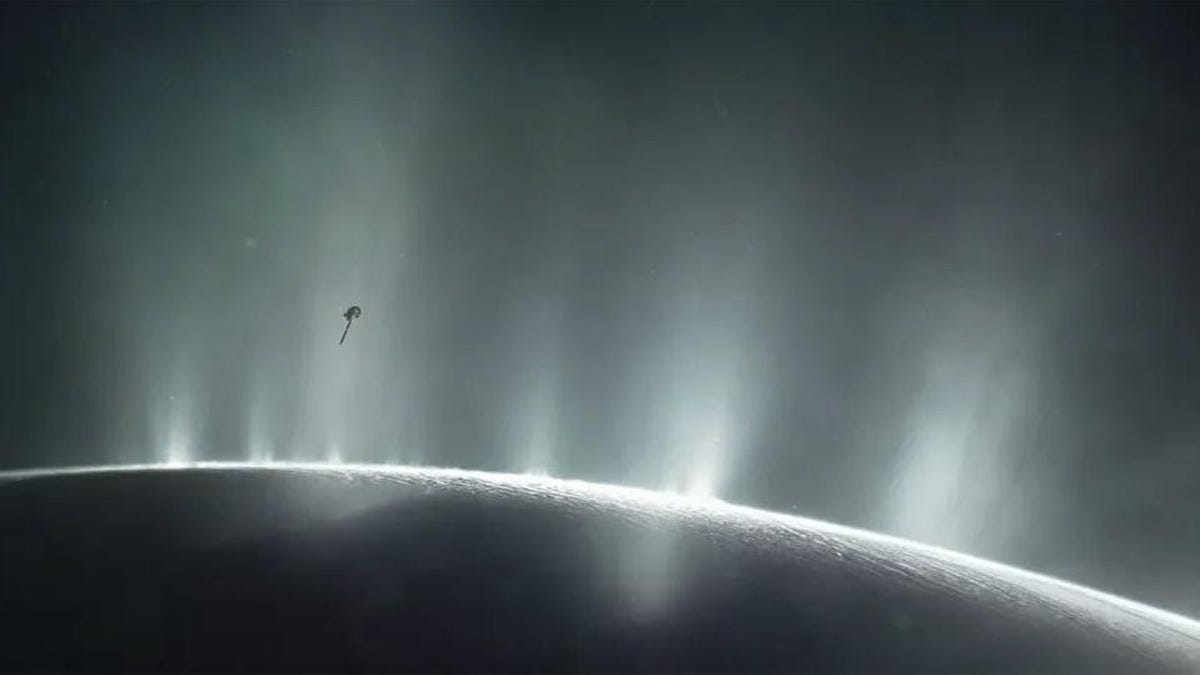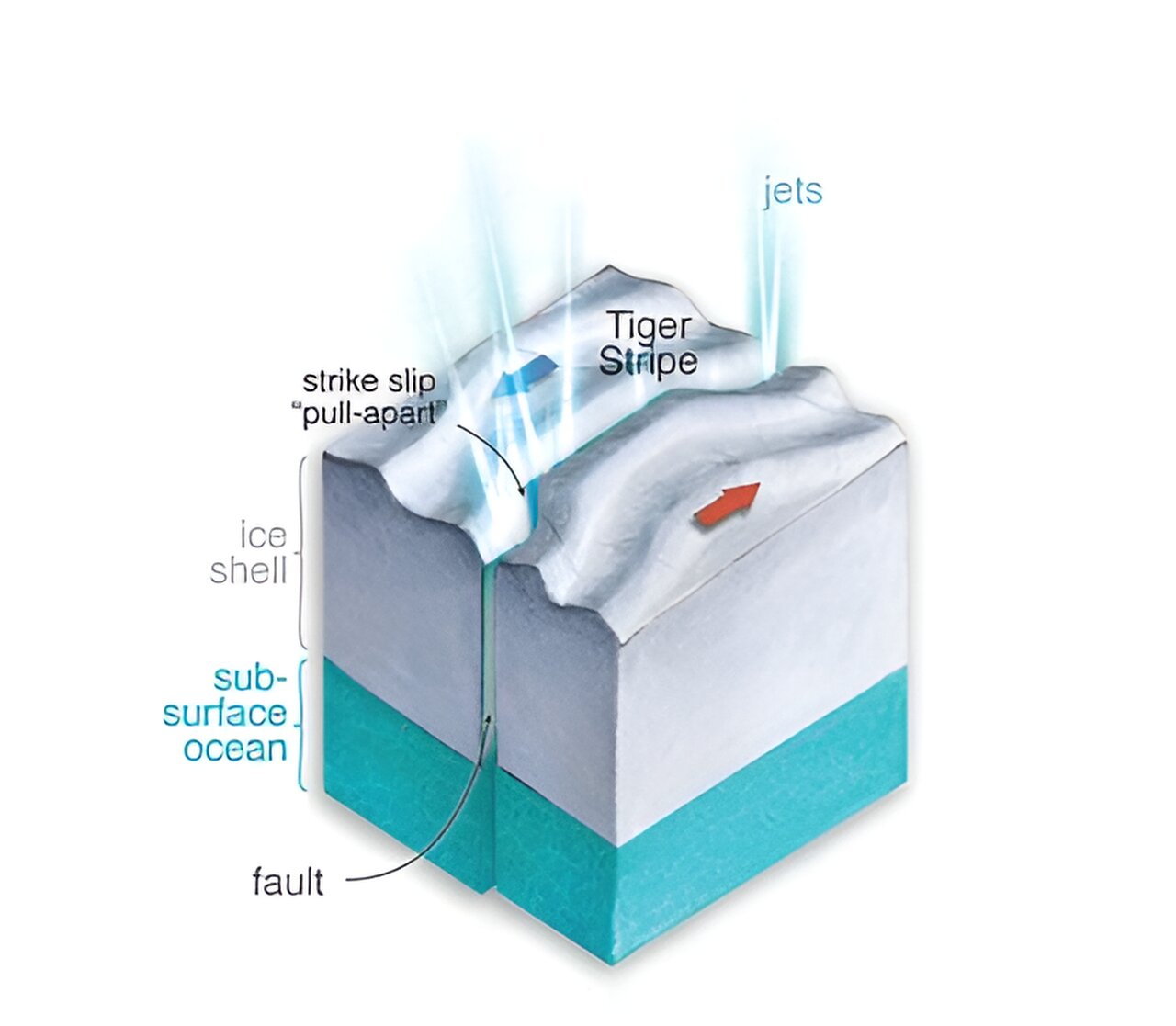
Enceladus, a moon of Saturn, is known for its active south pole and the jets of icy material that spew from it. The jets originate from four distinct fractures on the surface, referred to as 'tiger stripes.' A recent study published in Nature Geoscience suggests that strike-slip motion could regulate Enceladus' jets, similar to how the San Andreas Fault operates. This theory challenges the previous understanding of tiger stripes opening and closing to allow material to escape.
Enceladus harbors a global subsurface ocean more than 30 miles deep, which was first discovered by NASA's Cassini spacecraft in 2005. The salt-rich plumes ejected from the moon contain essential ingredients for life: carbon, hydrogen, nitrogen, oxygen, sulfur and phosphorus. Enceladus is the sixth-largest of Saturn's moons and spans approximately 310 miles in diameter.
The study was led by Alexander Berne from the California Institute of Technology (Caltech) and NASA's Jet Propulsion Laboratory. The researchers analyzed the brightness of Enceladus' jets and determined they were in sync with his hypothesized, sliding side-to-side motion of the moon's tiger stripes. This finding suggests that strike-slip motion could control jet activity at Enceladus.
Enceladus undergoes a cyclic stress due to its elliptical orbit, which causes tidal heating within it and maintains the global ocean beneath its icy crust. The tiger-stripe faults periodically open and close in response to tides, allowing material to rise through Enceladus' shell and spew into space. However, Berne's study proposes that strike-slip motion may be responsible for the correlation between strike-slip jet activity.
The researchers suggest that lateral extension along 'pull-apart zones' allows water to rise and feed material to cryovolcanic jets feeding Enceladus' plume. This framework provides a better understanding of the transport history of Enceladus' mineral-rich expulsions, which is crucial for investigating its potential habitability.




